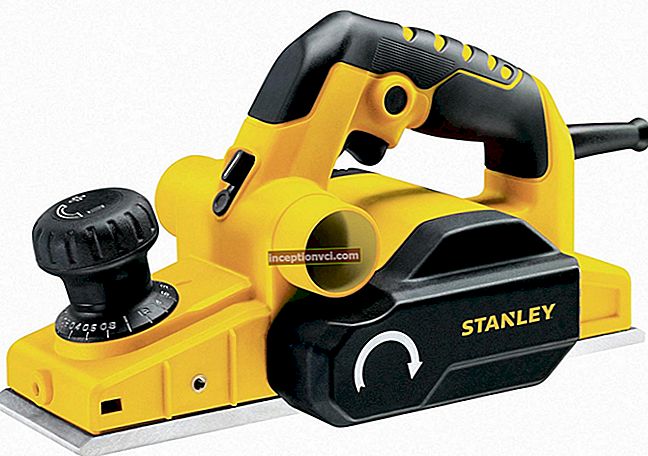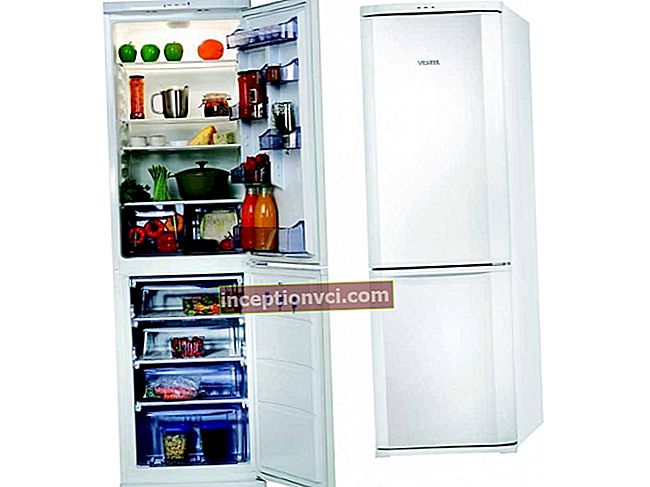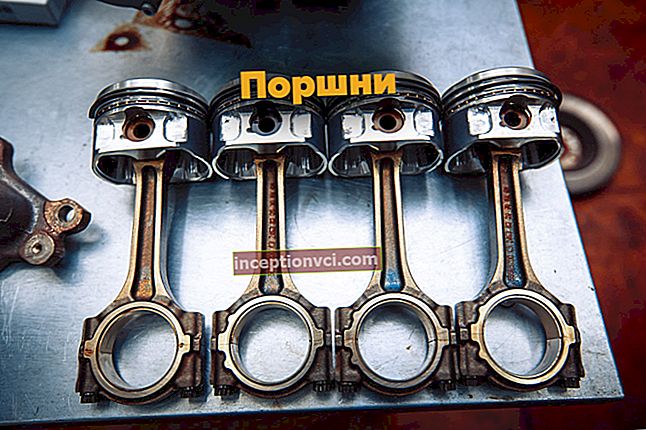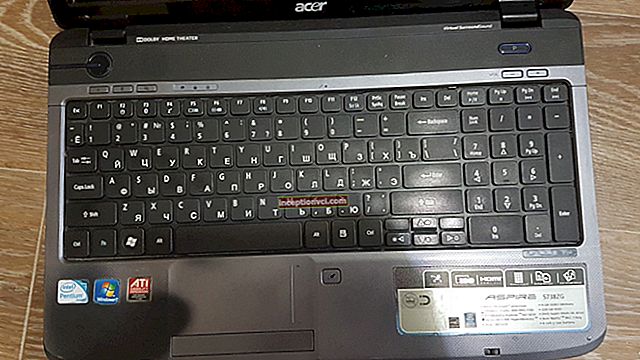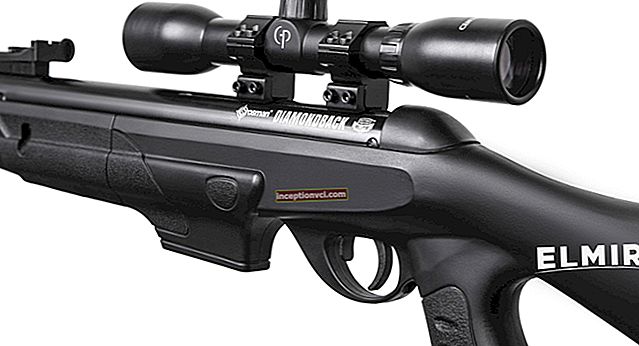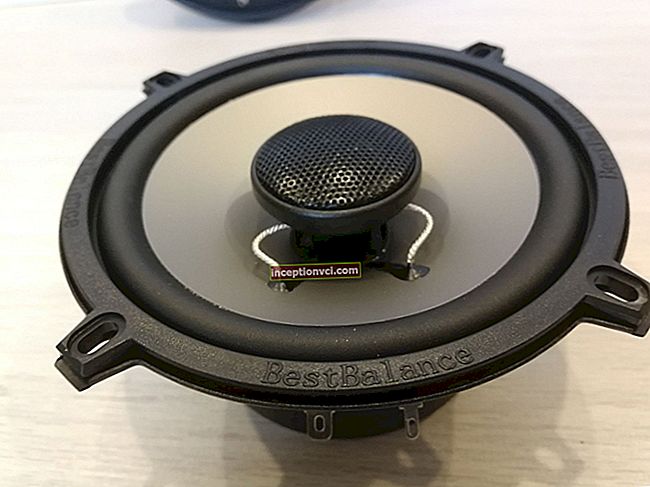Speakers Genius SW-HF 5.1 5050
Genius produces not only acoustic systems, but also keyboards, mice, cameras, MP3 players, headphones and other products. The brand was created in 1983, which indicates that the company has accumulated experience in the production of the aforementioned devices. In our country, Genius is a fairly well-known trademark.
I have repeatedly emphasized that I have a negative attitude towards the sound reproduced by more than two speakers. And while I am a supporter of stereo signals, I admit that the surround effects created by rear speakers in home theater sets can look very interesting. In the end, being the owner of the left and right ears, I will be consistent in my judgments - a large number of columns may be good, but not for me. At least I do not know of a single audiophile who would claim that “one” stereo will not be enough.
But I seem to have moved a little off topic. The speaker set being tested today is not a device designed for audiophiles, and this equipment will meet the associated expectations - the speakers will not sound like a very expensive and high-quality stereo device, because it was not created for that.
While unpacking the box, I felt a certain aesthetic pleasure, mainly due to the assessment of the material used to make the speaker cases, fortunately it was not plastic, which is a popular material and is often found in this segment. Will the Genius SW-HF 5.1 5050 be worth recommending? When judging "at first glance", I would recommend it without reservation, but let's move on to a more detailed acquaintance.

The speakers are packed in a large cardboard box, the weight of which is rather big, and its color scheme is made in the traditional for Genius red and white colors.


Since the packaging box is large, the manufacturer has placed "introductory" information on the back in 24 languages.
The photo below shows the entire speaker family, after removing all the contents from the package, the only thing that scares me is the number of cables.

What always scares me is the wires! Maybe that's why I don't like speakers with more than two speakers?

Fortunately, wireless kits are becoming more and more popular these days, mainly about the back elements of the voice acting here. Although, our hero of the test, he still does not possess these technologies. The remote control looks quite simple, which is good, since the modern design of the remote control would not match the classic look of the speakers.

Let's start with the low frequency subwoofer, which also serves as the control center.

Everything looks quite aesthetically pleasing, the material used is chipboard, which has a neat veneer finish (don't forget about the price segment of the product), the only thing I have comments on is a rough "fit" of the top cover to the rest of the case, but this is not hi -end device.

The front panel has a liquid crystal display, next to which there are buttons that allow you to access basic functions without using the remote control. At the bottom there is a large opening for the bass-reflex system, which is shaped like a cone and curved inward.

If you look at the subwoofer from the front, then on its right side, you can see the speaker located behind the grid.


All speakers installed in the speakers use cellulose membranes embedded in a foam "shock absorber" - a cheap and proven method that is widely used not only in cheap speaker sets.Upon closer inspection, you can see a very characteristic membrane roughness that reminds me of Kevlar - this material is used by some manufacturers to make audio speakers. This material is an expensive solution, and it is not clear why Genius associates its product with it? In my opinion, this is an unnecessary visual combination.
As a spring, the best solution would be to use rubber instead of foam, but the main thing is still the sound, so I will not cling to little things anymore. It's good that the large, dust-proof pad in the center of the speaker masks the not-so-pretty-looking mounting screws that hold the speaker in place.

The back panel is, first of all, a large-sized radiator for cooling the amplifier, as well as a number of connectors, plus a power button.



It also houses the fuse and the non-removable power cord.

The center speaker is one of the most important elements of a home theater system.

There are two bass-reflex holes on the rear panel, plus a connection socket. The speakers belong to the mid-low range and are made from the same materials as the others. The tweeter, which has a dome structure, is "in charge" of the high frequencies here, and it is difficult for me to say what material it is made of. Its material resembles ordinary plastic, and on the manufacturer's website, I did not find any information on this issue. One thing is clear, this dome is not made of textiles, and not aluminum.



The front speakers are slightly larger than the rear ones, and as it turned out later, they differ from each other not only in the size of the enclosures, but also in the size of the mid-low speakers, although in this case the term mid-range will be more appropriate in relation to them.


Each speaker has a bass-reflex hole on the rear wall, although I do not expect high acoustic pressure in them, especially for the rear speakers, which are small in size.


The smallest in the set, the rear speakers, I would prefer to leave with decorative grids (since the appearance without a grid leaves a lot to be desired). The only difference from the front speakers is that the rear satellites have a hole on their rear panel for wall mounting.



During the operation of the speakers, the display is limited only to the most necessary information, which tells us which speakers we are dealing with at the moment - the volume level is shown using two digits, plus a maximum of two letters identifying which speaker we are dealing with.



In our case:
C - central speaker (speaker);
FR - front speakers;
SU - subwoofer.
The "reset" button restores all the settings to the factory values, you can control the inputs from the remote control, namely, select the operation of the device, depending on what we have connected. The operations are simple and intuitive, we should not have any problems with the controls, even if some of you are very poorly versed in this "topic".
Test platform.
Operating system - Windows 7 Ultimate 64-bit - buy at F.ua store;
Sound Card - Asus Xonar Essence STX / A - buy at F.ua;
Column set for comparison - Altec Lansing ATP3 2.1;
Headphones - Sennheiser HD380 pro - buy headphones;
Audio discs: Mike Oldfield - “The Songs Of Distant Earth”, “Tr3s Lunas”, “Guitars”, “Tubular Bells III”; Schiller -"Tag Und Nacht", "Leben", "Desire 2.0"; Vibrasphere - Exploring The Tributaries, Lungs Of Life, Archipelago; Bon Jovi - Crossroad - Best Of; Seal - "Seal IV", "System"; Pink Floyd - “The Wall”, “The Final Cut”, “A Momentary Lapse of Reason”; Metallica - Michael Kamen with The San Francisco Symphony Orchestra; Michael Jackson - "Dangerous"; Billy Idol - “Idolize Yourself” - The Very Best Of.
Games: FarCry 2, Terminator - Salvation, Tomb Raider - Underworld, Call of Duty - Modern Warfare II.
DVD movies: Transformers "," Harry Potter - and the Goblet of Fire "," Apocalypto "," Babylon A.D ".
Before starting testing, I must say about one more thing - adjusting the subwoofer to the correct sound looks extremely difficult. While looking for solutions to place speakers in a small room, I positioned the subwoofer in the center, with the largest possible angle in relation to the room, although this still does not guarantee correct bass reproduction.
This detail is not a specific feature of a particular set; most speakers of this type, with a bass-reflex opening, coming forward or backward, have their own requirements regarding placement. The ideal solution is a closed case, but this design belongs to the number of high-end hi-fi subwoofers, where there are corresponding requirements for the rigidity of the case and the quality of the components used.
Finding a compromise - it took me half a day, in the end, I put the speaker very close to the wall, and turned it to the side. Although it did not seem like an ideal solution, in this position, at least, I could already get a more or less good sound result. The front speakers would be nice to move a little away from the wall, because they also have bass-reflex holes, and at higher volume levels, we can feel the difference.
I start my testing by listening to audio CDs, which I know very well. And at the very beginning of testing, I was pleasantly surprised. Expecting to hear a hiss of high frequencies from the tweeter, to my surprise, none of this happened. The upper range is so good that you can easily forget that you are dealing with a relatively inexpensive acoustic set. Electronic sounds pouring from CDs Vibrasphere and Schiller , in which you can hear strongly accented high tones at moments, do not have a drop of "overly squeaky" sound, and I can say that in search of any flaw, I have a habit of jumping out to the fore.
For me personally, it was a pleasant moment. The sound atmosphere surprises in a new way, and, with your eyes closed, you can sometimes feel the large space that the speakers create with the help of the magic of sounds. The location of the speakers plays a very important role here, it makes sense to experiment with their placement. In my case, the ideal placement is - crisscrossing lines of sound flow at the place where the listener is. Genius did a good job with a difficult album, which is "Metallica - Michael Kamen with The San Francisco Symphony Orchestra " , the width of the stage, as well as the quality of the reproduced high frequencies, was impeccable.
The middle range, like the high one, looks good, its accuracy and guitar overkill in albums Metallica or Bon Jovi, were well underlined. Of course, the sound does not look "neutral", because only very expensive devices can afford this, and despite this, the simple construction of the Genius, plus cellulose speakers, gives at least good results. At times it happens that sometimes the middle looks too emphasized, and in some places it is a little muffled, but this does not interfere with the correct display of the middle range, which, in general, corresponds to the correct sound. With vocals, the situation has a slightly different picture, I know very well all the CDs that I use for testing, and I listen to them mainly on my home audio system or headphones, so it's not difficult for me to find pros and cons that are deviations. from the reference "neutrality". Performer's voice Seal, only confirms previous observations, in some places it becomes a little "loud", and sometimes its lack appears.
Pink floyd and their album "Final Cut", namely the characteristic vocals of Roger Waters, is perfect for testing the mid-range, the CD, recorded a few years ago, sounds great and I listened to almost all of it. Genius speakers reproduce the middle exactly as you expect from them, and all the shortcomings described earlier do not appear so noticeably here. Playback by mid-range speakers is an undoubted advantage of this device.
Now let's look at the low end, and it looks pretty “simple”, and with the right subwoofer positioning, a good dose of bass can be expected.The subwoofer goes so low that my Altec Lansing PC speakers can't afford it - there's nothing to add here (although Altec is better at setting the pace). Genius can sound powerful in bass, and is not afraid of loudness, although it looks better at medium levels of the knob. You can find fault with adjusting the bass level, and, undoubtedly, this aspect requires better study, but given the cost of the device, you should not cling to this. The bass does not look elastic, does not dictate the rhythm, it slowly "spills" filling the music, and powerful and fast rock songs, as well as dynamic works, suffer most of all because of this. Vibrasphere, for which, the lower part of the range simply does not keep up. Summing up, it can be noted that the bass is deep, it can be very low and not fast, but at the same time it perfectly emphasizes the holistic nature of the entire acoustic set, while the correct placement of the components is necessary and indispensable.
In games, the situation looks somewhat different, here I was not looking for the correct sound close to neutrality, in this category, the result obtained is simple to describe. Music, which is not lacking in games, retains almost the same advantages and disadvantages that I wrote about a little above. As for sound effects, they can catch us off guard in modern games, and regardless of the nature of the game, they look great. Although I have to admit it would be nice to play around with the sound card's capabilities a bit here.
Call of Duty - Modern Warfare II sounds decent, I think this statement will equally apply to other games, an abundance of which is on the market. Every rustle, quiet crackling, shots, shouts, make the player involuntarily look around. The rear speakers know their job very well, and the center speaker adequately maintains the integrity of the sound.
About the voice acting of films, I have little to tell you. Here, just like in games, Genius speakers know their job. The dynamic scenes in the films are well accentuated, and again I sometimes have to look around, which testifies to the good collaboration between the speakers and the sound card, as well as the good quality of the sound material of the films.
Summing up, I would like to note that the Genius SW-HF5.1 5050 speaker set is a successful product, and I am sure that many people will appreciate it as highly as I do. Of course, there are no roses without thorns. So here, you can find fault with a little careless assembly, at a distance almost imperceptible, but at close range, you can see a large amount of glue protruding from under the "shock absorber", and not too evenly cut holes for the speakers.
It's just that the carpentry part is a little lame.
Another problem is the too short signal cable with which we connect the subwoofer. Indeed, in connection with the possible placement options, we need a wire that is at least three meters long. Another drawback is the lack of a "Power-off" button on the remote control or putting the device into "sleep" mode. Full mute is available from the back of the sub (which is where the mute button is located), and I admit it doesn't seem like a very convenient solution.
With reproducible sound, the Genius device "makes up" for small manufacturing flaws. In my opinion, the sound is a reflection of the first visual contact with the device, for example, a large subwoofer evokes the association of solid and dense bass, which it is. The front, center and rear speakers, at the first contact, give the impression of a good combination and integrity of the whole set, despite the shortcomings that I mentioned above. All "flaws" will go into oblivion when we find out how much this acoustic set will cost. Its cost is low and will be affordable for many buyers.Undoubtedly, the price is the strong point of the Genius SW-HF5.1 5050, and in combination with a decent sound, this product can be safely recommended for purchase.

Genius SW-HF 5.1 5050
Pros:
- very good sound quality in this price category;
- the speakers have an interesting, classic appearance;
- the presence of a remote control and an LCD display on the subwoofer;
- removable camouflage nets;
- low price of the device.
Minuses:
- there is no way to turn off the device from the remote control;
- too short a wire connecting the subwoofer to the sound card;
- small flaws in the quality of the speaker manufacturing.

